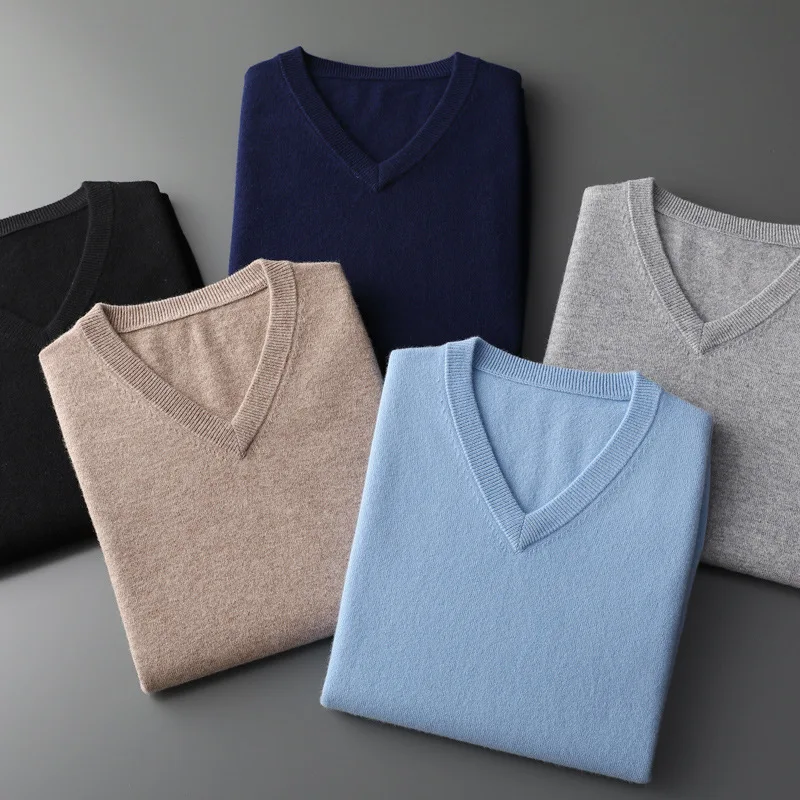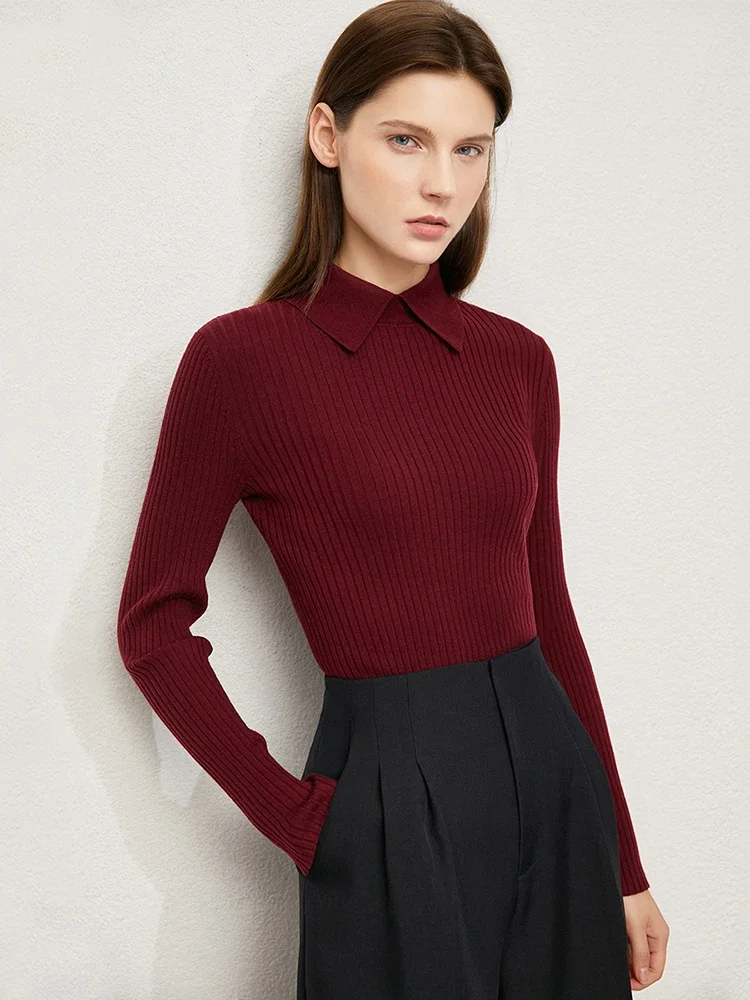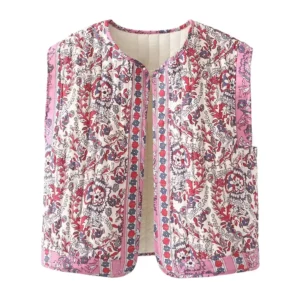Introduction: The Essence of Luxury Cashmere
Cashmere stands at the pinnacle of luxury fibers, coveted for its extraordinary softness, remarkable warmth-to-weight ratio, and exceptional insulation properties. This ultra-fine natural fiber, harvested from the undercoat of cashmere goats, represents a perfect marriage of nature’s ingenuity and human craftsmanship.
When exploring the world of premium cashmere, two names consistently dominate the conversation: Mongolian and Scottish. This distinction highlights the dual aspects that determine cashmere excellence—the inherent qualities of the raw fiber itself and the expertise applied during processing. Mongolian cashmere has earned worldwide recognition for its superior raw fiber characteristics, while Scottish cashmere is celebrated for unparalleled processing expertise.
The difference is substantial—true luxury cashmere fibers measure between 14-19 microns in diameter, compared to regular wool at 25-40 microns. This microscopic difference creates the tangible luxury that cashmere enthusiasts cherish. Understanding these styling tips for cashmere cardigans can help you appreciate the quality differences that affect how the garment drapes and feels against your skin.
This guide provides a nuanced comparison between these two prestigious cashmere traditions, helping you make informed decisions based on what matters most to you in a luxury cashmere garment.
The Origin Story: How Geography Shapes Cashmere Quality
Mongolia’s Harsh Climate Advantage
The exceptional quality of Mongolian cashmere begins with geography. The Mongolian Plateau subjects cashmere goats to extreme temperature fluctuations, with winter temperatures plummeting to -40°F (-40°C). This brutal climate triggers the development of an extraordinarily fine, dense undercoat that provides vital insulation for the animals’ survival.
These harsh conditions create a natural selection process where only goats with the finest, longest, and most insulating fibers survive the bitter winters. The high altitude (averaging 5,000+ feet above sea level) and dramatic seasonal shifts further enhance fiber development, resulting in cashmere with remarkable natural properties.
Scotland’s Processing Heritage
Contrary to common assumption, Scotland doesn’t produce raw cashmere fiber. Scottish cashmere’s reputation stems from centuries of textile processing excellence rather than goat herding. Scottish mills import raw cashmere primarily from Inner Asia, including Mongolia, China, and neighboring regions.
Scotland’s transformation into a cashmere powerhouse began during the industrial revolution when its textile industry pioneered techniques that maximized the potential of this precious fiber. The country’s cool, humid climate and uniquely soft water created ideal conditions for cashmere processing, allowing Scottish mills to develop methods that enhance the fiber’s natural qualities.
Those interested in learning more about regional variations might find our guide on where the world’s best quality cashmere comes from particularly enlightening, as it explores how geographic factors influence fiber characteristics.
Mongolian Cashmere: Nature’s Finest
Mongolian cashmere represents the pinnacle of natural fiber quality, distinguished by several remarkable physical characteristics:
- Exceptional Fineness: Typically measures between 14-16 microns in diameter, creating an incredibly soft hand-feel
- Impressive Length: Fibers commonly reach 36-42mm, significantly longer than cashmere from most other regions
- Superior Natural Resilience: Developed as a biological adaptation to extreme temperature fluctuations
- Enhanced Insulation Properties: Provides maximum warmth with minimal weight due to the fiber structure
The harvesting methods used by Mongolian herders have been refined over generations of nomadic tradition. Rather than shearing, which cuts the fiber, Mongolian herders typically hand-comb their goats during the spring molting season. This gentle collection method preserves the full length of the fibers, which directly translates to greater durability and reduced pilling in the finished garment.
This careful harvesting also maintains the fiber’s natural scales and structure, preserving its inherent resilience. The scientific relationship between fiber diameter and thermal properties explains why Mongolian cashmere excels at providing warmth without bulk—the finer the fiber, the more effective it is at trapping still air, which provides insulation.
For a deeper understanding of how Mongolian cashmere compares with other varieties, our detailed analysis of Mongolian cashmere versus Scottish processing explores these differences in greater depth.
Our collection of premium cashmere sweaters showcases how these exceptional fibers translate into luxurious garments that combine softness with impressive durability.
Scottish Cashmere: The Art of Transformation
Scotland’s cashmere reputation rests not on producing the raw material but on transforming it through unparalleled manufacturing expertise. Scottish mills represent the culmination of centuries of textile innovation, with techniques refined over generations to maximize cashmere’s natural potential.
The Scottish cashmere tradition centers on several distinctive processing advantages:
Advanced Dehairing Precision: Scottish mills employ specialized equipment that separates fine cashmere from coarser guard hairs while preserving fiber integrity. This technology, refined over decades, ensures consistency while minimizing fiber damage.
The Scottish Water Advantage: The uniquely soft water found in Scotland’s textile regions contains a mineral balance that enhances cashmere’s softness during washing and finishing. This natural resource creates a distinctive hand-feel that’s difficult to replicate elsewhere.
Meticulous Finishing Techniques: Scottish cashmere undergoes multiple finishing processes that enhance its natural qualities. From careful brushing that creates a subtle halo to precise pressing that establishes the correct drape, these steps transform good fiber into exceptional fabric.
Rigorous Quality Control: Premium Scottish mills implement exhaustive inspection protocols throughout production, maintaining consistent standards across batches and ensuring even the most subtle flaws are identified and addressed.

The true artistry of Scottish production lies in how it enhances the inherent qualities of the raw fiber while adding refinement and consistency. For those interested in learning more about these specialized techniques, our Scottish and Mongolian cashmere quality comparison provides deeper insights into these traditional methods.
Direct Comparison: The Critical Differences
When examining Mongolian and Scottish cashmere side by side, several key differences emerge that influence the final product’s characteristics:
| Characteristic | Mongolian Cashmere | Scottish Cashmere |
|---|---|---|
| Primary Strength | Raw fiber quality | Processing excellence |
| Typical Fineness | 14-16 microns | 15-17 microns (finished) |
| Fiber Length | 36-42mm naturally | Enhanced through processing |
| Hand-Feel | Natural, lofty softness | Refined, consistent softness |
| Durability | Natural resilience | Structure-enhanced resilience |
| Pilling Resistance | High (due to fiber length) | High (due to processing) |
| Color Options | Limited natural palette | Extensive dyed options |
| Price Points | Premium | Ultra-premium |
These differences create distinct tactile experiences. Mongolian cashmere often exhibits a natural loftiness that creates exceptional insulation with minimal weight. Its fibers maintain more of their original structure, creating a softness with subtle character variations that cashmere connoisseurs appreciate.
Scottish-processed cashmere typically delivers a more uniform experience with incredible consistency across the garment. The fiber density tends to be more controlled, creating a refined smoothness that feels slightly more structured than its Mongolian counterpart.
Over time and with washing, these differences can become more pronounced. Mongolian cashmere often softens further with wear while maintaining its natural loft. Scottish cashmere tends to hold its refined structure longer, maintaining its original appearance through more wearing cycles.
Understanding what makes cashmere special compared to other natural fibers helps put these differences in context, highlighting why both traditions have earned their prestigious reputations.
Performance Factors: Beyond the Origin Story
When evaluating Mongolian versus Scottish cashmere for practical everyday wear, several performance factors become particularly important:
Warmth and Insulation
* Mongolian cashmere typically offers slightly superior thermal efficiency due to its natural fiber structure and loft
* Scottish cashmere provides excellent warmth with a somewhat denser, more wind-resistant construction
Moisture Management
* Both types offer excellent breathability compared to synthetic alternatives
* Mongolian cashmere may absorb moisture slightly faster due to its natural fiber state
* Scottish cashmere often releases moisture more evenly due to controlled processing
Wear Resilience
* Mongolian cashmere’s longer fibers provide natural resistance to breakage and pilling
* Scottish processing enhances structural integrity, particularly at stress points
* Both require appropriate care to maintain their luxury properties
Weight and Drape
* Mongolian cashmere tends toward a lighter, more fluid drape
* Scottish cashmere often exhibits a more controlled, elegant hang
The construction method significantly affects how these characteristics present in the finished garment. Knitted garments highlight the natural elasticity and loft of Mongolian cashmere, while woven items often showcase the refined finish of Scottish processing.
Our brushed cashmere sweater collection demonstrates how specific finishing techniques can enhance cashmere’s natural properties for different wearing experiences.
The Quality Spectrum: Recognizing Premium Cashmere
Regardless of origin, truly premium cashmere exhibits specific indicators of quality that discerning buyers should recognize:
Grade Classification
Premium cashmere falls into three recognized grades:
* Grade A: The finest fibers (14-16.5 microns) with longest staple length
* Grade B: Medium-fine fibers (16.6-19 microns) with good length
* Grade C: Acceptable fibers (19-21.5 microns) with shorter length
Key Quality Checkpoints:
* Fiber Diameter: Lower micron count means finer, softer fibers
* Fiber Length: Longer fibers (36mm+) create stronger yarn with less pilling
* Yarn Consistency: Even thickness without slubs or irregularities
* Finish Quality: Smooth surface with appropriate luster
Red Flags for Inferior Cashmere:
* Prices significantly below market average for pure cashmere
* Vague labeling about origin or fiber content
* Excessive initial softness that comes from chemical treatments
* Poor recovery when the fabric is stretched gently

Understanding how construction affects performance can help you make better choices. Our guide on the differences between loose and tight knit cashmere explores how knitting techniques influence durability, warmth, and appearance.
Investment Considerations: Value Beyond Price
Premium cashmere represents a significant investment, but several factors justify the expense for discerning buyers:
Long-Term Value Analysis
* Quality cashmere typically lasts 10+ years with proper care
* Cost-per-wear decreases dramatically over time
* Superior thermal efficiency reduces need for multiple layers
Price Differential Factors
* Scottish cashmere commands higher prices due to:
* Labor costs in Western manufacturing
* Multi-stage processing expertise
* Brand heritage premiums
* Mongolian cashmere pricing reflects:
* Exceptional raw material quality
* Traditional harvesting methods
* Increasing sustainability certifications
Sustainability Considerations
* Longevity represents the most significant sustainability factor for both types
* Ethical sourcing practices are becoming standard for premium producers
* Scottish processing emphasizes water conservation and treatment
* Mongolian production increasingly focuses on sustainable herding practices
When evaluating this investment, considering whether cashmere cardigans are worth the investment can provide valuable perspective on the long-term value proposition.
Cashmere Wrap Sweaters, Women's Cashmere Pullovers
$75.89 Select options This product has multiple variants. The options may be chosen on the product pageCashmere Cable Knit Sweaters, Women's Cashmere Pullovers
Price range: $111.82 through $112.93 Select options This product has multiple variants. The options may be chosen on the product page- Price range: $171.47 through $181.33 Select options This product has multiple variants. The options may be chosen on the product page
Cropped Cashmere Sweaters, Women's Cashmere Pullovers
$155.77 Select options This product has multiple variants. The options may be chosen on the product page- Price range: $87.29 through $91.47 Select options This product has multiple variants. The options may be chosen on the product page
Oversized Cashmere Sweaters, Plus Size Cashmere Sweaters, Women's V-Neck Cashmere Sweaters
$136.87 Select options This product has multiple variants. The options may be chosen on the product page
Choosing Your Ideal Cashmere: A Decision Framework
Selecting between Mongolian and Scottish cashmere ultimately depends on your personal priorities and how you plan to wear the garment:
If your priority is maximum natural softness:
Mongolian cashmere offers an unparalleled natural hand-feel with exceptional loftiness and character.
If you value refined consistency:
Scottish cashmere delivers meticulous uniformity and elegant structure that maintains its appearance through many wears.
If you prefer subtle variation and natural character:
Mongolian cashmere retains more of the fiber’s natural qualities, creating unique character in each garment.
If perfect uniformity matters most:
Scottish processing excels at creating consistent, flawless surfaces with precisely controlled finishes.
Use case considerations:
* For everyday comfort and casual wear, Mongolian cashmere’s natural properties excel
* For professional and formal settings, Scottish cashmere’s refined appearance often proves advantageous
* For maximum warmth with minimal weight, Mongolian cashmere typically has the edge
* For structure-dependent styles, Scottish processing provides better shape retention
Estate Cloth’s cashmere turtleneck collection demonstrates how these quality differences manifest in specific garment styles, helping you visualize the practical implications of each tradition.
Caring for Premium Cashmere: Preserving Your Investment
Proper care significantly extends the life of premium cashmere, regardless of its origin:
Essential Care Protocol:
1. Hand wash using lukewarm water and specialized cashmere wash or mild shampoo
2. Gently squeeze (never wring) to remove water
3. Lay flat on a towel, reshape while damp
4. Dry away from direct heat or sunlight
5. Store folded with cedar blocks or lavender sachets to deter moths
Care Considerations by Type:
* Mongolian cashmere may require more gentle reshaping during drying due to its natural loft
* Scottish cashmere typically holds its shape better during washing but may be more sensitive to water temperature
Pilling Management:
* Some initial pilling is normal with all cashmere
* Remove pills using a cashmere comb or fine sweater stone
* Mongolian cashmere’s longer fibers typically result in less pilling over time
* Scottish processing can enhance pilling resistance through structural improvements

For comprehensive guidance on maintaining your investment pieces, our guide on how to fold and store cashmere safely provides essential techniques to maximize garment lifespan.
Beyond the Binary: The Hybrid Approach
The most exciting development in luxury cashmere is the emergence of hybrid approaches that combine the best aspects of both traditions:
Collaborative Excellence
Premium producers increasingly source exceptional Mongolian raw fiber and apply Scottish processing expertise to create “best of both worlds” garments. These partnerships between herding cooperatives and traditional mills merge raw material excellence with processing mastery.
Innovation in Processing
New techniques allow processors to preserve more of the natural character of Mongolian cashmere while adding the refinement of Scottish methods. This approach maintains the unique qualities of the raw fiber while enhancing consistency and finish.
Evolving Standards
These hybrid approaches are establishing new benchmarks for luxury cashmere that transcend traditional geographic distinctions. The focus shifts from origin to specific quality attributes regardless of source or processing location.
This evolution creates exciting possibilities for connoisseurs who appreciate both traditions. Our cashmere vest collection showcases how diverse approaches to cashmere processing can create distinctive wearing experiences across different garment types.
Common Misconceptions: Separating Fact from Fiction
Several persistent myths can confuse consumers seeking premium cashmere:
Myth: Scottish cashmere comes from Scottish goats.
Fact: Scottish cashmere refers exclusively to the processing location. The raw fiber typically comes from Mongolia, China, or other Asian regions.
Myth: All cashmere is created equal.
Fact: Dramatic quality variations exist within both Mongolian and Scottish categories, with differences in fiber diameter, length, and processing quality.
Myth: Higher price always indicates better quality.
Fact: While quality cashmere is never cheap, price often reflects brand positioning and marketing costs rather than proportional quality improvements.
Myth: Mongolian cashmere is always superior to other sources.
Fact: While Mongolian cashmere often has excellent natural properties, the “best” choice depends on specific priorities and the intended use of the garment.
Understanding these distinctions helps you make more informed purchases based on actual quality rather than marketing claims or geographic assumptions.
Final Verdict: A Matter of Personal Priority
After exploring the nuances of Mongolian and Scottish cashmere, the “superior” choice emerges as entirely subjective—dependent on your specific preferences and how you plan to use the garment.
Mongolian cashmere excels in raw material quality, offering exceptional natural properties directly from the source. Its outstanding fineness and length create an inherently superior fiber that provides remarkable warmth, softness, and character.
Scottish cashmere represents the pinnacle of processing artistry, transforming fine raw materials through centuries of expertise into garments with refined consistency and elegance. The controlled processing creates a distinctive finishing quality that many luxury consumers prefer.
Rather than declaring an absolute winner, consider which qualities matter most for your specific needs. Whether you prioritize natural character or refined consistency, the most important factor is selecting genuine, high-quality cashmere from reputable sources.
For more ways to enjoy your premium cashmere investment, explore our guide on styling a cashmere cardigan for versatile looks to maximize the versatility of these luxurious garments.







